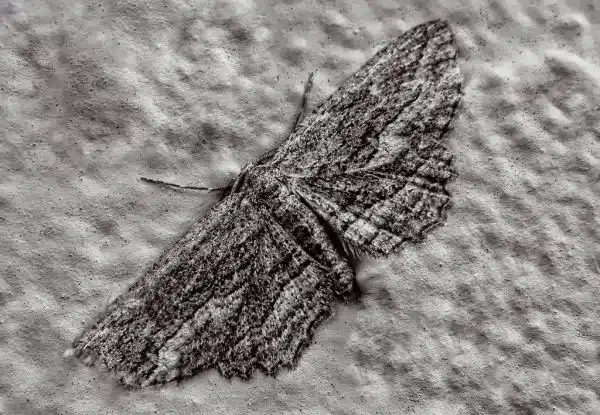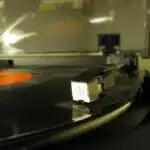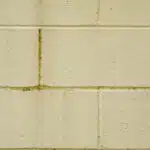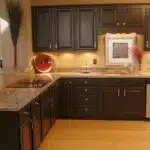As a professional stucco painter, I have honed my skills over the years and learned various techniques to achieve a flawless finish. Painting stucco may seem like a daunting task, but with the right tools and knowledge, it can be an easy and satisfying experience. Whether you’re looking to repaint your home’s exterior or freshen up its interior walls, this article will provide you with step-by-step instructions on how to paint stucco.
Firstly, it’s essential to understand the nature of stucco. Stucco is porous and has a rough texture that requires thorough preparation before painting. Skipping preparation steps can lead to unsatisfactory results such as peeling or chipping paint. In this article, we’ll guide you through each step of the process from preparing the surface to choosing the right type of paint for your project. By following these guidelines, not only will you achieve professional-grade results, but you’ll also save money by doing it yourself instead of hiring a professional painter.
Understanding The Nature Of Stucco
Stucco is a popular exterior material used in buildings worldwide. Understanding its composition and history is essential to paint it effectively. Stucco is a mixture of cement, sand, and water applied over a wire frame or lath. The word “stucco” comes from the Italian “stuccare,” which means to plaster. This term was first used in the 16th century by Italian artisans who were experts in plastering.
One of the benefits of stucco is that it provides an attractive and durable finish for buildings. It can also improve insulation, making it an energy-efficient option. However, stucco does have some drawbacks. It can crack easily if not applied correctly, allowing moisture to seep into the walls and cause damage. Additionally, stucco can be challenging to maintain due to its textured surface.
To prepare the surface for painting stucco, it’s crucial to clean it thoroughly and repair any cracks or damage before applying paint. This will ensure that the paint adheres well to the surface and lasts longer.
Preparing The Surface
Like a blank canvas waiting for the artist’s brush, a freshly prepared stucco surface is a sight to behold. It is smooth and even, ready to receive the paint that will bring it to life. However, before you can start painting, you need to ensure that the surface is properly prepared.
Surface preparation tips are essential for achieving a long-lasting and beautiful paint finish on stucco. One of the most common mistakes people make when painting stucco is failing to clean it thoroughly. Dust and debris can accumulate on stucco surfaces over time, making it difficult for paint to adhere evenly. Therefore, before starting any painting job, be sure to clean the surface with soap and water or use a pressure washer if necessary.
Another common mistake is not allowing enough time for the stucco surface to dry after cleaning or power washing. Moisture trapped in the surface can cause bubbling or peeling of the paint once applied. As a professional stucco painter, I recommend waiting at least 24 hours after cleaning or power washing before applying any type of paint or primer.
In summary, preparing your stucco surface for painting requires patience and attention to detail. Surface preparation tips such as thorough cleaning and proper drying time are crucial steps in achieving a flawless paint finish. Avoiding common mistakes such as these will help ensure that your painted stucco surfaces look great for years to come. In the next section about cleaning and power washing, we will discuss how to properly clean your stucco surface without damaging it and how power washing can be used as an effective tool in preparing your surface for painting.
Cleaning And Power Washing
Best practices for painting stucco include thoroughly cleaning and power washing the surface beforehand. This ensures that the paint adheres properly and lasts longer. It is important to use the right equipment for this step, as it can be a labor-intensive process.
Equipment recommendations for cleaning and power washing stucco include a pressure washer with a minimum of 3000 PSI and a 0-40 degree nozzle tip. A garden hose with a spray nozzle can also work, but may not be as effective. It is also recommended to use a cleaning solution specifically designed for stucco surfaces to remove any dirt, grime, or mold buildup.
When power washing, it is important to start at the top of the surface and work down in sections. This prevents streaks and ensures that all areas are cleaned evenly. After power washing, allow ample time for the surface to dry before beginning any painting or repairs.
For best results when painting stucco, it is crucial to begin with a clean and properly prepped surface. Cleaning and power washing are essential steps in achieving this goal. By using recommended equipment and following proper techniques, you can ensure that your stucco will look great for years to come.
Moving on to repairing damaged areas of stucco requires careful attention to detail and proper techniques.
Repairing Damaged Areas
In order to assess and repair damaged areas, it is important to identify the areas that need to be fixed. This includes examining the stucco for any visible cracks or damage. Once the damaged areas are identified, a repair plan should be created to ensure proper repair of the stucco cracks. The repair plan should include the appropriate materials, tools, and techniques that are necessary for the repair process.
Assessing Damaged Areas
As a professional stucco painter, assessing damaged areas is crucial to ensuring a successful repair job. It can be disheartening to see cracks and holes in your stucco walls, but it’s important to assess the extent of the damage before attempting any repairs. This will help you identify the repairs needed and ensure that you have all the necessary materials and tools on hand.
To assess the extent of the damage, start by inspecting the entire surface area of your stucco walls. Look for any visible cracks, holes or discoloration. Pay attention to areas where water may have penetrated through the stucco, as this can lead to further damage over time. It’s important to take note of all areas in need of repair before attempting any work.
Once you’ve identified repairs that need to be made, you can begin preparing for your repair job. Make sure you have all necessary materials and tools on hand before starting any work. This includes stucco mix, trowels, sandpaper, paint brushes and other supplies specific to your project needs. By thoroughly assessing damaged areas and identifying necessary repairs beforehand, you’ll be better equipped for a successful repair job that leaves your stucco looking as good as new.
Repairing Stucco Cracks
As a professional stucco painter, repairing damaged areas is an essential part of our job. One of the most common types of damage that we encounter is cracks in the stucco surface. These cracks can be caused by a variety of factors, including settling or shifting of the building’s foundation, temperature changes, and normal wear and tear over time. It’s important to address these cracks as soon as possible to prevent further damage and maintain the integrity of the stucco finish.
Repairing stucco cracks involves several steps, starting with cleaning and preparing the damaged area. This includes removing any loose debris or old caulking from around the crack and using sandpaper to smooth out any rough edges. Once the area is clean and smooth, we can begin applying a stucco patching compound to fill in the crack. It’s important to choose a compound that matches the color and texture of the existing stucco finish for a seamless repair.
After applying the patching compound, we use finishing techniques such as texturing and painting to blend it in with the surrounding surface. This requires skill and attention to detail to ensure that the repaired area matches perfectly with the rest of the wall. By using these color matching and finishing techniques, we can ensure that even large or noticeable cracks are repaired effectively without leaving behind any unsightly blemishes on your stucco walls.
Applying A Sealant
Did you know that applying a sealant after painting your stucco can extend the lifespan of your paint job by up to 10 years? That’s right, using a sealant can provide long-lasting protection against weathering and fading. In addition to protecting your stucco, applying a sealant also offers several other benefits.
One of the main benefits of using a sealant is its ability to prevent water damage. Water can seep into small cracks in your stucco and cause significant damage over time. A high-quality sealant will create a barrier against water, preventing it from penetrating the surface of your stucco. This reduces the risk of mold growth and structural damage.
There are several types of sealants available for stucco, including acrylic, silicone, and elastomeric. Acrylic sealants are ideal for areas with low humidity levels as they offer moderate protection against water damage. Silicone sealants are perfect for high-humidity areas as they provide superior resistance to water penetration. Elastomeric sealants are highly flexible and can withstand extreme temperature changes without cracking or peeling. Choosing the right type of sealant depends on your specific needs and climate conditions.
Transition: Now that you understand the benefits of applying a sealant to your stucco, let’s move on to choosing the right type of paint for your project.
Choosing The Right Type Of Paint
When it comes to painting stucco, choosing the right type of paint is crucial. Not only does it affect the overall appearance of your home, but it can also impact the durability and longevity of your stucco. One of the first decisions you’ll need to make is what color options are available. Many homeowners choose neutral colors like beige or gray, while others opt for brighter hues that can add a pop of color to their homes.
Another important factor to consider when selecting paint for stucco is cost. While some brands may be more expensive than others, it’s important to remember that quality should always come first. A high-quality paint will not only provide better coverage and a longer lifespan, but it may also save you money in the long run by reducing the need for frequent touch-ups or repainting.
When weighing your options, keep in mind that different types of stucco may require different types of paint. For example, if you have an acrylic-based stucco finish, you’ll want to use an acrylic-based paint. On the other hand, if your stucco has a cement-based finish, you’ll need a masonry or elastomeric paint that can expand and contract with changes in temperature and humidity. By taking these factors into consideration and doing your research ahead of time, you can ensure that you choose the right type of paint for your specific needs and budget.
As you move forward with painting your stucco, keep in mind that selecting the right tools for the job is just as important as choosing the right type of paint. In order to achieve a smooth and even finish on your stucco walls, you’ll need high-quality brushes and rollers designed specifically for rough surfaces like stucco. Additionally, having protective gear such as gloves and goggles can help keep you safe during the painting process. With these tools in hand and a little bit of patience and attention to detail, you can achieve a professional-looking finish that will enhance the curb appeal and value of your home.
Selecting The Right Tools For The Job
Having chosen the right type of paint for your stucco, the next step is to select colors that suit your preferences and complement the building’s overall aesthetic. It’s important to consider both practical and aesthetic factors when choosing a color scheme. For example, light colors reflect sunlight and heat, creating a cooler environment in hot climates, while dark colors absorb heat and are best suited for colder regions.
Before you begin painting, it’s important to take safety precautions to protect yourself from harmful chemicals or injuries. Wear protective gear such as gloves, goggles, and masks to avoid inhaling fumes or getting paint on your skin. Be sure to work in a well-ventilated area and keep fire sources away from flammable materials.
After preparing your stucco surface by cleaning it thoroughly and repairing any cracks or chips, it’s time to apply a primer. A primer is essential because it helps the paint adhere properly to the surface, preventing peeling or cracking later on. Choose a quality primer that is compatible with both the stucco material and the paint you have selected. Apply it using a roller or brush, making sure to cover all surfaces evenly. Allow the primer to dry completely before moving on to painting.
Applying A Primer
Choosing the right primer for your stucco surface is crucial to ensure a smooth and long-lasting paint job. There are many primers available in the market, but not all of them may be suitable for your stucco surface. You need to select a primer specifically designed for stucco surfaces that can fill in pores and gaps effectively. Look for a water-based acrylic primer that can provide excellent coverage and adhesion.
Before you start applying the primer, make sure the stucco surface is clean and dry. Use a pressure washer or scrub brush to remove any dirt, dust, or debris from the surface. Allow it to dry completely before starting with the priming process. It is recommended to apply two coats of primer on your stucco surface, allowing each layer to dry completely before applying another coat.
Tips for smooth application of primer include using a high-quality roller or brush to apply it evenly on the surface. Start from the top and work downwards while painting in small sections. Avoid applying too much pressure on the roller or brush as it may leave marks on the surface. Spread out any drips or runs immediately with your brush or roller while they are still wet.
Now that you have applied a suitable layer of primer, it’s time to get ready for mixing paint. Ensure that you follow all instructions carefully when mixing paint to achieve good results. Mixing paint requires attention to detail as even slight variations can affect color consistency and texture of the final product. A well-mixed paint will ensure that your stucco surface looks beautiful and lasts longer without fading or peeling off easily.
Mixing The Paint
After applying a primer, it’s time to start thinking about the color options for your stucco. Before choosing a color, consider the style of your home and the surrounding environment. For example, earthy tones work well with natural settings, while brighter colors can add a pop of personality in urban areas. Once you have chosen your color, it’s important to mix it properly.
Mixing ratio tips vary depending on the brand of paint you choose. However, a good rule of thumb is to mix one gallon of paint with one quart of water. This will ensure that the paint goes on smoothly and evenly. It’s also important to remember that stucco is highly absorbent, so you may need more than one coat to achieve full coverage.
When mixing your paint, be sure to use a stir stick or drill attachment to thoroughly mix the pigment and water. Once mixed, pour the paint into a roller pan and begin applying the first coat in even strokes using a high-quality roller brush. Take care not to apply too much pressure as this can cause bubbles or streaks in the finish. With these tips in mind, you’ll be well on your way to achieving a beautiful stucco finish that will last for years to come.
Applying The First Coat
- Prior to applying the first coat of paint, the surface must be properly prepared by clearing away any loose material and smoothing out any rough spots.
- The appropriate paint must then be mixed together thoroughly in order to ensure proper coverage.
- It is important to apply the paint using a roller, beginning from the bottom and working your way up to avoid any streaks.
- It is also important to overlap each roller stroke in order to ensure that the entire area is completely covered with the paint.
- Supplemental coats can be added to increase the coverage of the paint and to provide a more even and polished look.
- The first coat of paint should be allowed to dry before any additional coats are applied.
Preparing The Surface
Surface preparation is key to achieving a successful stucco painting project. Before applying the first coat, it is essential to ensure that the surface is clean and free from any debris or dust. Using a pressure washer or a scrub brush along with a cleaning solution will help remove any dirt, grime or loose particles that may affect the adhesion of the stucco. It is important to wait for the surface to dry completely before moving on to the next step.
In addition to cleaning, proper priming of the surface is equally crucial for a durable and long-lasting finish. The primer acts as an adhesive between the stucco and the surface, ensuring that it adheres evenly without flaking or peeling off prematurely. It also helps seal any pores or cracks in the substrate which may cause water infiltration and eventual damage. Applying a high-quality primer will not only enhance adhesion but also improve coverage and reduce the amount of paint needed.
Surface preparation and priming are essential steps in achieving a professional-looking stucco finish. Skipping these critical steps can lead to unsightly results that may require costly repairs down the line. Taking time to ensure that your substrate is clean, dry, and appropriately primed will help you achieve an optimal outcome that will last for years to come.
Mixing The Paint
After thoroughly preparing the substrate, the next step is to start mixing the paint. As a professional stucco painter, it is essential to ensure that you have chosen the right color options for your project. You can choose from a wide variety of colors, and it is important to select one that complements the overall design of the building. Once you have decided on your color choice, it’s time to mix the paint.
When it comes to mixing stucco paint, consistency is key. The ideal paint consistency should be thick enough to stick to the surface but thin enough to spread easily without dripping or running. As a skilled painter, you need to know how much water and how many bags of paint to use for each batch. It’s recommended that you mix one bag of paint at a time and add water gradually until you achieve the desired consistency.
To ensure optimal results, it’s important to mix your paint thoroughly before applying it onto the surface. Use a paddle mixer or drill with a mixing attachment to blend the paint properly. Remember that different brands of stucco paints may require different mixing times and methods, so always refer to the manufacturer’s instructions for guidance. By taking the time to mix your stucco paint correctly, you can achieve a consistent texture and an even finish that will enhance your building’s aesthetic appeal.
Applying The Paint
After ensuring that the substrate is well-prepared and the paint is thoroughly mixed, it’s time to apply the first coat. As a professional stucco painter, applying the paint requires attention to detail and a steady hand. Choosing colors that complement the building’s design is crucial to achieve an aesthetically pleasing finish. However, avoiding common mistakes during application is just as important.
To start with applying the first coat of paint, use a roller or sprayer to distribute the paint evenly over the surface. It’s essential to work in small sections, focusing on one area at a time and making sure there are no missed spots or areas with too much or too little paint. Applying too thick of a coat can result in cracking or peeling over time, while applying too thin of a layer can lead to unevenness in texture.
As you work your way across the surface, pay close attention to corners and edges as these areas tend to have less coverage than flat surfaces. Take breaks as needed to avoid fatigue and maintain focus on achieving an even coating throughout the entire project. By taking your time and using proper techniques for application, you can ensure that your finished product will be a beautiful addition to any building.
Allowing For Drying Time
After applying the first coat of stucco, the next step is to allow it to dry completely before moving on to the next phase. It is essential to exercise patience during this stage, as rushing the process can result in a poor finish and even damage to the coating. The importance of allowing adequate drying time cannot be overstated, as it affects not only the appearance but also the durability and longevity of the stucco.
Tips for optimal drying include monitoring weather conditions such as humidity and temperature, which can affect drying time. A humid environment can cause moisture to build up within the coating, leading to cracking or blistering. Conversely, high temperatures can cause rapid evaporation and premature hardening of the surface, preventing proper bonding between coats. To ensure an ideal climate for drying, experts recommend waiting until temperatures are above 40°F and relative humidity is below 70%.
In addition to environmental factors, other tips for optimal drying include ensuring proper ventilation and avoiding excessive moisture exposure through rain or sprinklers. Adequate air circulation helps evaporate excess moisture from surfaces faster. By following these recommendations and allowing ample time for each coat to dry thoroughly, you can achieve a beautiful and long-lasting stucco finish that will enhance your property’s aesthetic appeal.
To proceed with applying the second coat of stucco successfully, it is essential to ensure that the first coat has dried entirely before proceeding. Rushing this process could lead to an uneven surface that will require additional work later on – thus wasting both time and money. Therefore, exercising patience during this stage is critical in achieving a smooth and even finish that will last for years without requiring maintenance.
Applying The Second Coat
- Before applying the second coat of stucco, an initial coat of stucco must be applied and left to dry for at least 24 hours.
- All areas must be cleaned, free of dust and debris, and lightly dampened prior to applying the second coat.
- The second coat should be applied in a single pass that is 1/8″ thick and should be applied perpendicular to the direction of the first coat.
- The second coat should be allowed to dry for 24-48 hours prior to the application of any additional coats or finishing.
Preparing The Second Coat
As a professional stucco painter, the second coat is an important aspect of painting stucco. Preparing the second coat involves making color choices and determining application techniques. It is essential to select the right color that complements the overall aesthetic of the building. This may involve consulting with clients or architects to ensure the chosen color meets their preferences.
Once you have selected a suitable color, it is time to determine the application technique. There are various application techniques available for painting stucco, such as spraying, rolling, and brushing. Each technique has its benefits and drawbacks, so it is crucial to choose one that works best for you. For instance, spraying may be more efficient but less precise than brushing or rolling.
To prepare for the second coat, ensure that the first coat has dried entirely before commencing with any further applications. Clean any debris or dust from the surface thoroughly using a broom or blower before applying the second coat. By following these steps and paying attention to color choices and application techniques, your stucco project will look stunning once complete without any hassle or issues.
Applying The Second Coat
As a professional stucco painter, applying the second coat is a crucial step in achieving a flawless finish. It is essential to prepare the surface adequately before continuing with any further applications to ensure an even and long-lasting result. In this subtopic, we will discuss tips and techniques for applying the second coat while avoiding common mistakes.
One of the most critical tips for applying the second coat is to mix the paint thoroughly before starting. This ensures that the pigments are evenly distributed throughout the mixture and helps provide consistent coverage across all areas of the surface. Another helpful tip is to use a high-quality roller or brush to achieve optimal results. Using cheap or worn-out tools can result in uneven application, blotches, or visible brush marks.
Common mistakes when applying the second coat include overworking the paint or failing to allow ample drying time between coats. Overworking can lead to an uneven finish or cause streaks and make it difficult to correct mistakes after they have dried. On the other hand, not allowing enough drying time between coats can result in poor adhesion and make it challenging to achieve a smooth, uniform finish. By following these tips and avoiding common mistakes, you can ensure that your second coat application provides excellent results that last for years to come.
Touching Up Any Imperfections
After applying the second coat, it is important to let it dry completely before proceeding with any touch-ups. This can take anywhere from 24-48 hours depending on the climate and humidity levels. Once the stucco is completely dry, inspect it for any imperfections such as bubbles, cracks or uneven spots.
To touch up any imperfections, you will need a variety of tools including a trowel, sandpaper, and paintbrushes. First, use the trowel to smooth out any bubbles or bumps in the stucco surface. Then, use sandpaper to lightly sand any rough areas until they are even with the surrounding stucco. Finally, use a paintbrush to carefully apply a small amount of paint or stucco patching compound to fill in any cracks or holes.
Common mistakes to avoid when touching up stucco include using too much pressure with the trowel which can cause more damage and creating an uneven surface. Additionally, using too much paint or patching compound can result in an unsightly finish that stands out from the rest of the wall. By taking your time and being patient during this process, you can ensure that your stucco has a flawless finish.
When all touch-ups have been completed and allowed to dry completely, it’s time to clean up afterward. Remove all tools and materials from the work area and dispose of them properly. Clean any spills or drips with soap and water before they have a chance to dry onto surfaces. By following these steps you’ll be able to successfully complete your stucco painting project with professional-looking results that will last for years to come.
Cleaning Up Afterward
After completing a stucco painting project, it is essential to clean up the area properly. This involves disposing of any unused or excess materials, such as paint and cleaning supplies, in a safe and responsible manner. Disposal methods may vary depending on local regulations, so it is essential to research proper disposal procedures beforehand.
Protective gear should be worn during the cleanup process to prevent any potential hazards. This includes gloves, a mask, and safety glasses. It is also important to ensure that all equipment used during the project is cleaned properly and stored away safely for future use.
Overall, proper cleanup after a stucco painting project ensures not only a neat and organized workspace but also contributes to environmental responsibility. By following correct disposal methods and wearing protective gear, you can ensure the safety of yourself and others while maintaining a clean environment. With this step completed, you can now move on to admiring your handiwork with confidence.
Admiring Your Handiwork
As a stucco painter, you’ve put in the time and effort to create a beautiful finish on your project. It’s like planting a seed and watching it grow into something magnificent. The process is both rewarding and fulfilling, leaving you with a sense of pride in what you’ve accomplished.
Now that the paint has dried, it’s time to admire your handiwork. Take a step back and appreciate the texture and color of the stucco. Observe how it complements the surrounding architecture and landscaping. This is the moment when all your hard work pays off.
But your job doesn’t end here. As with any painted surface, regular maintenance is essential for longevity. A few tips for maintaining stucco include keeping it clean by power washing once or twice a year, repairing any cracks immediately to prevent water damage, and ensuring proper drainage around the foundation to prevent moisture buildup.
If you’re looking to add an extra touch of elegance to your stucco finish, consider adding decorative finishes such as faux painting or textured patterns. These finishes can be achieved by using specialized tools and techniques that create unique designs on the surface of the stucco. With these added touches, you can take your stucco finish from ordinary to extraordinary, making it truly one-of-a-kind.
Your hard work has paid off in creating a stunning stucco finish that will last for years if properly maintained. Keep up with regular cleaning and repairs while exploring new ways to enhance its beauty through decorative finishes. Your dedication will ensure that this project remains a masterpiece for years to come.
Conclusion
Stucco is a popular and durable material used in many homes. However, over time, stucco can become faded, stained, or damaged. Painting stucco can help restore its appearance and protect it from further damage.
To begin painting stucco, it is important to understand its nature and prepare the surface accordingly. This involves cleaning and power washing the area and repairing any damaged areas before applying a sealant to ensure the paint adheres properly.
Applying multiple coats of paint is also essential for achieving a smooth finish. Touching up any imperfections and cleaning up afterward will ensure that your work is complete.
Ultimately, painting stucco requires patience, attention to detail, and skill. As professional painters know all too well, painting is both an art and a science. Like creating a masterpiece on canvas, painting stucco requires careful preparation and execution. The end result will not only be aesthetically pleasing but also provide long-lasting protection for your home.
As the saying goes, “A good paint job is 90% preparation and 10% painting.” Just like an artist prepares their canvas before beginning to paint, preparing your stucco surface is crucial for achieving excellent results. The process may take some time and effort but the end result will be worth it – a beautiful home that stands out in the neighborhood. So roll up your sleeves and get ready to transform your home into a work of art!
Image Credits
- “Moth on Stucco” by FotoGrazio (featured)





























